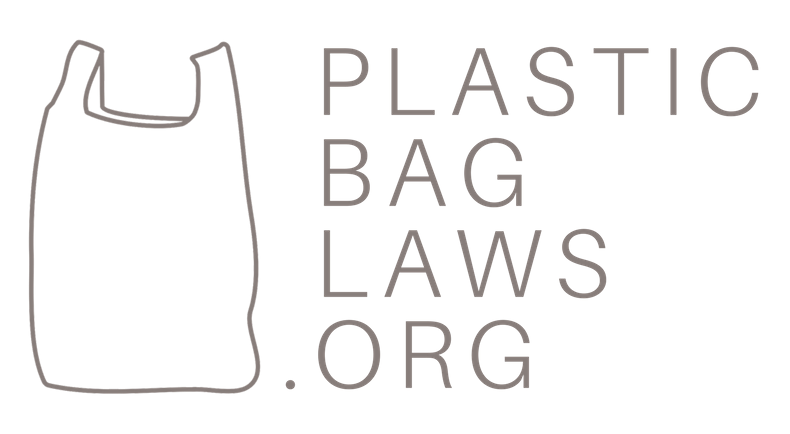Impacts of Prop 26 on Single-Use Bag Bans in California
By Shanna Foley In November 2010, California voters passed Proposition 26. Prop 26 redefines regulatory fees as taxes. This means that new regulatory fees must now be treated like taxes and must be approved by a legislative supermajority (at the state level) and a voter supermajority for local measures.
Proposition 26 thus makes it much harder to pass regulatory fees that are commonly used as a way to charge polluters for the environmental damage they cause, such as carbon fees used to address health impacts of pollution, or hazardous waste fees used to support waste disposal.[1] Not surprisingly then Prop 26 was funded by a variety of industry groups.[2]
There is also a concern that Prop 26 can be used to impede efforts by a number of California cities and counties to ban plastic bags. A growing number of cities are placing a fee on paper bags as well as banning plastic bags, thus raising Prop 26 concerns. The American Chemistry Council, a major opponent of such laws, has already threatened suit over Los Angeles Counties bag ban.
A simple answer would be to only ban plastic bags and forego the fee on paper bags. However, opponents of plastic bag bans have made a successful legal argument that paper bags have environmental impacts as well, thus tying up proposed bans in lengthy California Environmental Quality Act (CEQA) litigation. Cities have found that a successful counter-strategy is to ban plastic bags and charge a fee for paper, thus addressing environmental impacts from both paper and plastic.
Crafting a Bag Ban in the Wake of Prop 26
In response to Prop 26, cities have begun to restructure their bag ordinances by having the proceeds from the charge on paper bags go to the retailer instead of the government. Additionally, jurisdictions passing a bag ban should choose a fee that is reasonably related to the actual cost involved in providing the bag.
This approach is consistent with the opinion of San Jose’s City Attorney, who found that Prop 26 does not apply to such bag bans because it does “not result in revenue to the state or local government . . . Rather, like the sale of any other product, the retail establishment retains the revenue from the sale without any requirement that the retailers pay for governmental activity.”[3]
This differentiation has also been supported by prior California Supreme Court cases. For instance, in Sinclair Paint Co. v. State Bd. of Equalization, the California Supreme Court discussed the difference between a tax and a fee and noted that revenues from both taxes and fees got to the government.[4]
As mentioned above, Los Angeles County has responded to Prop 26 by amending its bag ordinance so that revenues from the bag fee go to the retailer, not the government.[5] The American Chemistry Council, which has threatened to sue over the bag ban, responded to this change in a letter to LA County Counsel. In its letter, the ACC stated that such a change would still constitute a violation of Prop 26 because the government still controls how the bag revenue is used.[6] The ACC stated that the requirements for how revenues are spent means that retailers are acting as an “agent of the government.”[7] However, there is nothing within the specific language of Prop 26 to support this contention.
No suits have been filed yet to challenge the proposition, but commenters have said that such a lawsuit is likely to occur.[8] In order to craft a bag ordinance that can withstand both CEQA and Prop 26 challenges, California cities should proceed with bans in which the revenues from a charge on paper bags to the retailer. Just to be on the safe side, cities should also make sure that charge is reasonably related to the cost of providing the product. [9]
[1] See No on Prop 26 http://consumercal_blog.live.radicaldesigns.org/?page_id=55
[2] See Top Prop 26 Contributors http://www.noonproposition26.com/about-prop-26/who-is-bankrolling-26/
[3] Memorandum on Single-Use Carryout Bag, Richard Doyle, City Attorney (Dec. 2, 2010) www.sanjoseca.gov/clerk/Agenda/20101214/20101214_0702.pdf
[4] Sinclair Paint Co. v. State Bd. of Equalization, 15 Cal. 4th 866, 874 (Cal. 1997).
[5] Los Angeles County Model Ordinance ttp://ladpw.org/epd/PlasticBags/pdf/BagOrdinanceasAdopted.pdf
[6] American Chemistry Council Letter to Andrea Ordin, Office of the County of Los Angeles (Nov. 11, 2010) www.americanchemistry.com/11478
[7] Id.
[8] See Colin Sullivan, Calif.’s Little-Noticed Prop 26 Squeaks Through in Dead of Night, New York Times (Nov. 3, 2010) http://www.nytimes.com/gwire/2010/11/03/03greenwire-califs-little-noticed-prop-26-squeaks-through-59912.html
[9] Reminder: The information on this website is not, nor is it intended to be, legal advice. You should consult an attorney for individual advice regarding your specific situation.
